When can roses be transplanted and how to do it?

The rose is rightfully considered the queen of flowers. Many gardeners grow these beautiful rose bushes on their plots. Sometimes they have to be transplanted, many factors can become causal. This should be done following all the rules and recommendations. Although garden roses are considered persistent and hardy, if the transplant technology is violated, the bush can be destroyed.


What is the transplant for?
The obvious reasons for transplanting roses on the site are the strong overgrowth of the bush, and the desire to propagate the variety. Sometimes roses grow so much that they run out of space, and they can crush other plants in the area. Strongly overgrown rose bushes can block the path, it becomes inconvenient for gardeners to walk the site. It is difficult to care for large bushes, it is impossible to reach the central shoots. Old large bushes often no longer have enough nutrients in the soil, then they slow down in growth, bloom less, and may completely die. As a rule, after a transplant, they feel better in a different place.
Experienced gardeners can propagate roses of rare varieties or colors on their own, dividing them into several parts when transplanting. This way of propagating roses is considered optimal.

Planting a large bush in several new locations is a great breeding solution and getting more roses.
Very often roses are transferred to another place to create a new flower arrangement. The gardener may get tired of the flower bed and its color scheme, so he decides to create something new on the site.
Transplanting to a new location helps to rejuvenate the old plant. When transplanting, you need to remove the oldest shoots and roots, leaving only the healthiest and youngest. Almost all flowering shrubs need periodic replanting and soil changes.
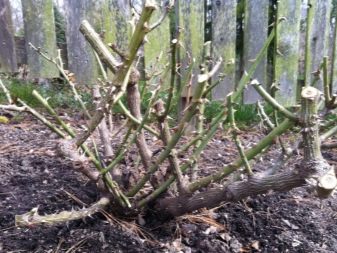
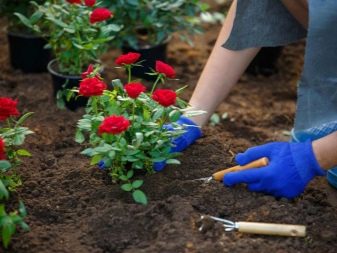
When to transplant?
You can transplant rose bushes from one place to another in spring, summer and autumn. Of course, it is better to do this in spring or autumn, the rose will take it almost painlessly. In the summer, replanting roses can only be done when absolutely necessary. You do not need to do this during the period of bud formation and in extreme heat.
In the spring the timing of the transplant must be calculated so that the bush has time to settle in a new place before the first buds appear. But the transplant can be started when the ground completely thaws and warms up to at least + 7 ... 10 degrees.
In autumn the transplant must be carried out before the onset of frost, then the rose will well endure the winter, and in the spring it will immediately grow. The month for the transplant must be chosen depending on the climatic conditions of the region of residence. It could be October or even early November (in warm southern regions).
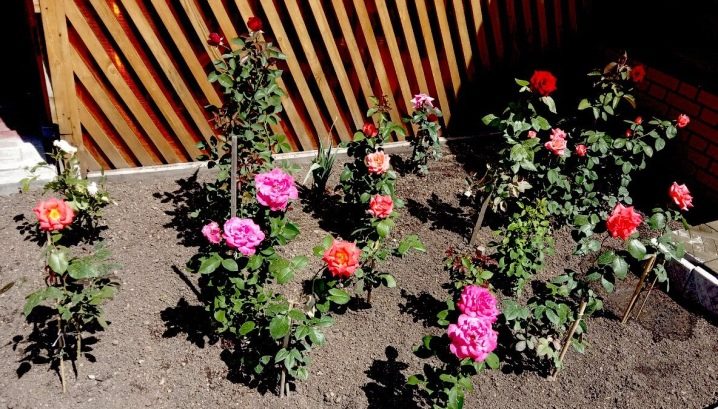
Spring
In the spring, roses should be transplanted before the beginning of the growing season, roughly early April - mid-May. If leaves have already appeared on the bush, then it is better to leave the transplant until autumn. After transplanting, the rose requires abundant regular watering and more careful maintenance. For the procedure, choose a cloudy day, you can even closer to the evening, then it will take root faster and will not hurt.
Whimsical rose varieties may not bloom in the summer after transplanting, or the flowering will be late and less plentiful.
If the plant slows down in growth or is sick, then it is better to cut off the resulting buds so that the plant uses all its strength and nutrients for the development of shoots and root system.
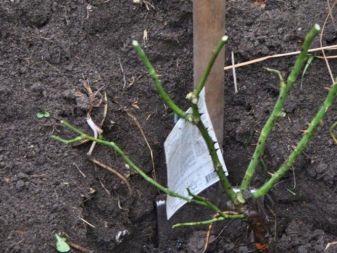
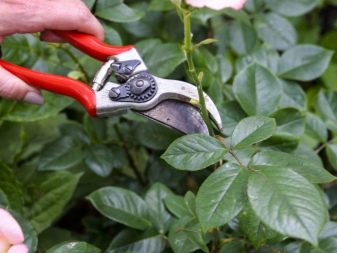
Summer
In the summer, roses are transplanted only when absolutely necessary.... For example, if the rose begins to ache due to the wrong place or soil. The day for transplanting you need to choose a cloudy, not hot. The procedure is best performed in the evening. Before this, the bush is watered abundantly, when transplanting, it is necessary to preserve the earthen lump around the roots as much as possible. And after transplanting, the soil must be kept moist. The rose needs to be pruned a little so that all the forces go to the formation of a strong root system. It is better to protect the bush from direct sunlight. In the evening, the rose can not only be watered, but also sprayed. Make sure that pests do not appear on the rose, otherwise the bush may die.
Transplanting a plant during flowering is extremely dangerous, the bush may die. If transplantation cannot be avoided, the buds must be cut off or the shoots with flowers must be cut off completely. So the rose will not waste energy on flowering. Old shrubs will almost certainly not tolerate transplants during flowering.
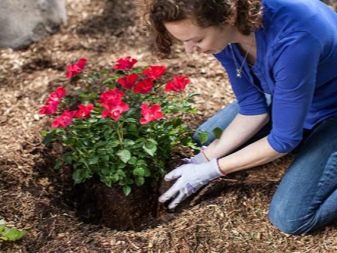

Autumn
Healthy rose bushes tolerate autumn transplantation painlessly, and in spring they begin to grow rapidly. The transplant can be started after the leaves have completely fallen off, about 3 weeks before the first frost. The bush should have time to take root in a new place.
Before changing the place, the bush needs to be cut, old shoots and roots removed, in the spring such a rose will begin to build up the root system with renewed vigor and will give many young shoots. Flowering will begin at the same time as the rest of the bushes.
After transplanting for the winter, the bushes must be carefully covered so that they do not freeze. To do this, use fallen leaves or sawdust.
Autumn is a great time to breed roses by dividing a large bush into several smaller ones. At the same time, a healthy, good shoot and a sufficient part of the root system should remain on each new part. New bushes in the spring will immediately grow and, most likely, will not hurt.
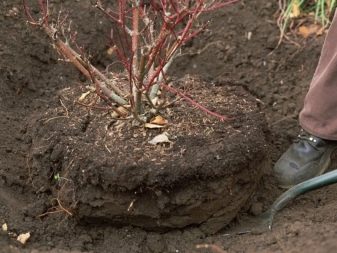

Features of the choice and preparation of the site
Roses love partial shade, when sunlight only hits in the morning or evening hours. At the same time, the plant feels bad in full shade. With a lack of light, the stems become thinner, and the number and size of buds noticeably decrease. For abundant flowering, roses need a long daylight hours. The place should be well protected from drafts. Rose does not feel well in the cold wind. The soil should be loose and fertile, with good drainage characteristics. When moisture stagnates in the soil, the rose will begin to ache, and rot will form on the roots.
If in the previous place the rose grew well, then try to choose a new place with similar conditions... And if the old place did not fit, then take into account the mistakes and choose the right conditions for the growth of rose bushes. When choosing a place in the garden in a flower bed, take into account the growth rate of the bushes, leave enough free space. Large shrubs require a lot of nutrients, space and fresh air. At the dacha, you can choose a site for planting near buildings, while avoiding the neighborhood with large fruit trees. Trees grow quickly, and the shade from them will prevent the rose from blooming profusely. But buildings, walls or a fence will protect roses from unwanted drafts.
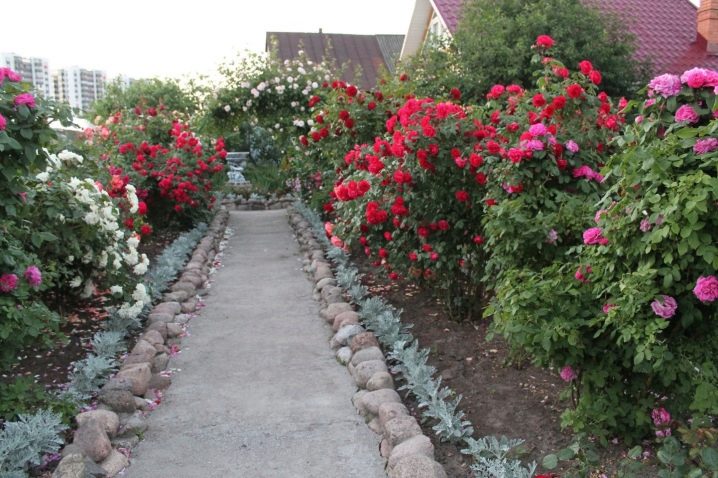
The landing site must be prepared in advance, 1-2 weeks in advance. If this is not possible, then 2-3 days will be enough... The hole is dug to a depth of more than half a meter, with a diameter of 50-60 cm. A drainage layer (small stones or broken brick) is poured onto the bottom. The hole is dug in advance so that the soil has time to settle a little. If the soil is infertile, then it is recommended to add ready-made soil to the hole, or make the composition yourself (peat, sand and humus are suitable for this). If the soil is acidic, you can add dolomite flour or eggshells.It is not recommended to add mineral fertilizers when planting roses.
After all the preparatory work, you can proceed directly to the transplantation process.
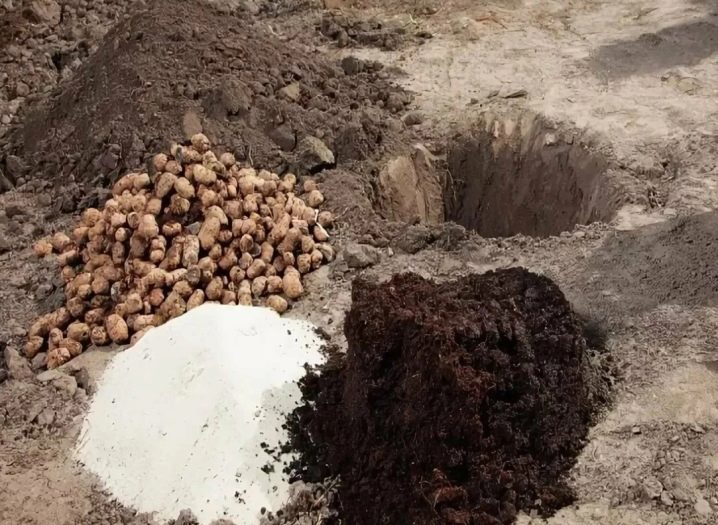
Step-by-step instruction
Correct transplantation of an adult rose bush is the key to success and rapid rooting of a plant in a new place... Subject to all the nuances, the bush will easily transfer the process, quickly recover and begin to bloom.
Before starting the transplant, you need to find out if the rose is self-rooted or grafted. Their root systems are different. Untrained roses have sprawling roots and do not go deep into the ground. And grafted bushes have a pivotal root system that goes deep into the ground. Consider this when digging up the bush, then the damage will be minimal.


The rules for planting are simple, even a novice gardener can handle them. If you do this for the first time, then it is better to transplant together, it will be more convenient for you, and the bush will be less damaged. Better to choose a warm but cloudy day.
- On the day of transplanting, the bush must be shed well so that the soil remains moist. So it will be possible to preserve as much as possible an earthen lump around the roots. You need to dig out the bush very carefully so as not to severely injure the bush and roots.
- The stems of tall, spreading bushes can be neatly tied for convenience... If the variety is prickly, then it is recommended to wrap the shoots with a cloth so as not to injure your hands. Tall standard roses are cut by 1/3 of the total height, and bush roses are cut by 20-30 cm.
- Now the bush needs to be dug to a depth of at least 20 cm, approximately the size of the root system. The bush is carefully removed with a lump of earth, the long roots are chopped off with a sharp shovel or other suitable tool. It will not work to preserve the root system in large bushes, pruning is inevitable. If the rose is large, the bush is gently swayed from side to side and removed from the pit (the process is similar to the extraction of milk teeth).
- After removing the root system, carefully examine it without destroying the earthen lump. Remove any rotten, bacterial parts of the roots. Treat the sections with ash, honey or brilliant green.
- If planting is planned in a few days, then the root system is wrapped with a damp cloth and left in the shade. The fabric should be wetted regularly. And if planting is not planned soon, for example, more than 10-12 days, then the bushes need to be dug into a shallow trench or hole. The dug-in bushes are left in an inclined position, sprinkling with soil on top, without compacting it. Do not let the roots dry out.
- When planting in a new place, leave the root collar at the same level as before... Place the roots in the prepared hole and begin to cover with earth. The soil needs to be tamped 2-3 times and shed well. A distinctive feature of planting roses is watering the plant during planting, not after it. If the root system has been badly damaged, then during watering, you can add "Kornevin" for early rooting.
- After transplanting, roses require more careful care and supervision.



Follow-up care
In the first week after planting, roses need regular watering. Keep the soil slightly moist and the plant does not dry out... In the summer, the transplanted bushes need to be shaded. The plants can be covered with a light-colored cloth during the day. Until complete rooting, the plants must be carefully looked after, making sure that they do not droop and the leaves do not begin to turn yellow.
If, after transplanting, the rose begins to wither, then the plant is dying, and urgent action is needed. Most likely, the plant lacks nutrients, then when watering it needs to be fed with organic fertilizers. And then mulch the soil around the plant. But this must be done carefully so as not to overdo it with fertilizers. Everything is good in moderation.
If the bush grows poorly, is sick or wilted, its root system may have been severely damaged. Then you need to add special agents to the soil that accelerate the rooting process ("Kornevin").


Experienced gardening tips
Experienced gardeners have their own secrets to successfully replanting roses. There are nuances of transplanting different varieties of roses and bushes of different ages.
- Tall standard roses (especially adults) it is better to transplant in the spring, so that they have time to restore the root system by winter.
- Mature plants it is also better to replant in spring.
- Flowering bushes it is better not to transplant. During flowering, the plant spends all its energy on the formation of buds, there may not be enough nutrients for recovery.
- Bush varieties roses can be transplanted both in spring and autumn.
- Curly varieties (tea rose) before transplanting, you need to cut it off, leaving 20-30 cm.
- An intertwining rose when planting, they are deepened by 10-15 cm.
- After transplanting, rose bushes can be watered with a weak solution of potassium permanganate to protect against pests.
- If the root stem begins to turn black, which means that the root system is affected by rot, the plant requires treatment.
- Roses with buds cannot be transplanted, they must be cut off first. If a rose is transplanted with buds, it will drop them and may no longer bloom for 2-3 seasons.

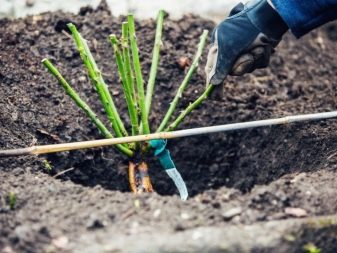
Following these tips and tricks, beginners can easily cope with a flower queen transplant. It may seem difficult the first time, but later on it will be easy. And fragrant bushes will delight you with bright, abundant flowering.

































































































The comment was sent successfully.